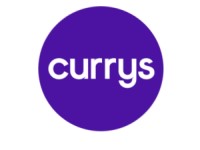‘Baldock! Branding’s just flower arranging, right?’ The man firing this at me (years ago) was a Harvard professor of marketing, so I suspected a trick question. But it set me thinking.
It still does. What can a brand do for a business today? And when is the right time to rebrand? This has been front of mind recently, as we’ve embarked on the rebranding of our business to Currys.
After all, it’s no small undertaking to rebrand thousands of customer touch points, everything from vans to uniforms to 300 stores. And mothballing longstanding brands like PC World, Dixons, Team Knowhow and Carphone Warehouse is not done lightly, cheaply, or without risk.
So it has to be worth it. In this case, I think it is, for four reasons.
First, getting recognition from customers for everything you do. Many didn’t know that they were dealing with the same business when they bought a washing machine from Currys, had it installed by Team Knowhow, upgraded their mobile with Carphone, or their laptop with PC World. Now we’ll be recognised for everything we do for customers, in electricals and mobile, products and services alike.
Second, rebranding can help you evolve what you stand for. In our case, we were always well-known for helping customers choose new tech in a store. We now want to be famous for helping them choose, afford and enjoy their tech, giving them the best of online and stores together. We want to be famous for services, as well as products; and for omnichannel, not just stores.
Third, better economics. People often fret about the short-term cost of retiring established brands, and we have to be mindful of that. At the same time, one strong brand gives us real leverage when it comes to marketing. Every pound we spend supports every part of our business. In our case we had a headstart. We saw the power of moving to one brand when we brought our entire Norwegian business together as Elkjop six years ago. It worked, and gave us an encouraging precedent and a proven business case.
And it’s not just for cost leverage that successful businesses often throw their weight behind their strongest brands. These brands draw in customers too. Today who remembers Midland Bank or the Marathon bar – HSBC and Snickers are household names. Closer to home in retail, who now remembers Isme, which was folded into Very? Nor was it the toughest decision to put our shoulder behind Currys, for 130 years the best-known and most trusted brand in tech retail.
Last, but certainly not least, rebranding can be good for colleagues as well as customers. If you’re bringing together previously disjointed businesses into one, that can better be reflected by one brand. “I work for Currys” is what we can all say now.
There’s a clue, and a potential pitfall, in that last point. One integrated business may be better reflected by one brand. But if you’re not actually integrating the business, don’t bother with the rebranding. This only works if branding reflects what you’re actually doing, if brand is backed by substance.
This is true not just with colleagues in mind, but customers too. We had to be confident that, for customers, we’d made enough progress on the substance of our transformation. On improved retail basics like range, availability and price. On an easier customer experience. On building a stronger online business, and giving every customer the benefits of online and stores together. And on services - helping the customer not just choose a product, but also afford it, get started with it, give it longer life, and get the most out of it. When we were confident enough on that substance, we rebranded.
The other way – pasting on branding over nothing underneath – just breeds cynicism. The other way is just flower arranging.
